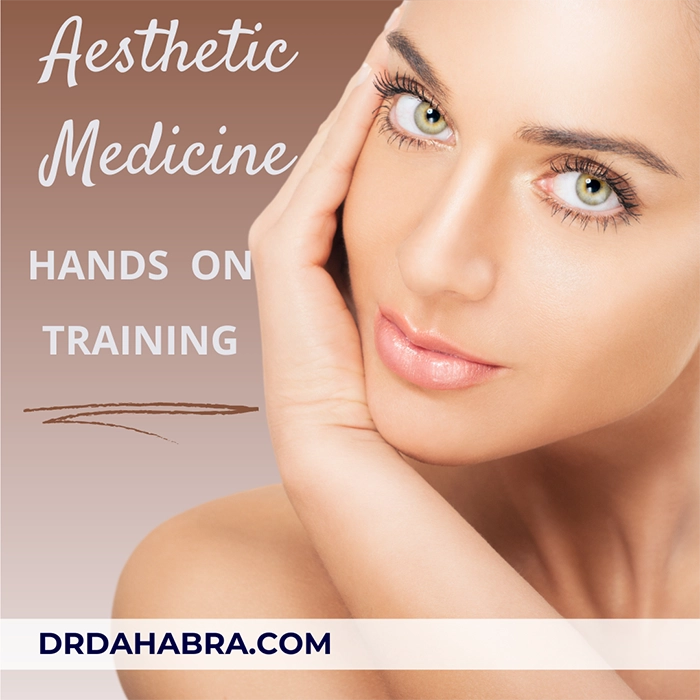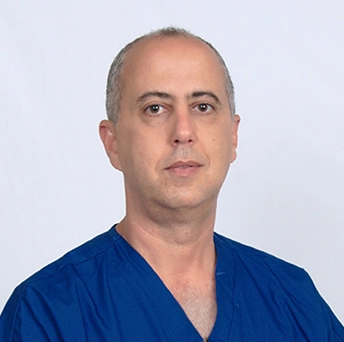Transform Your Career with Florida’s Best Aesthetic Medicine Hands-On Training
Introduction to Aesthetic Medicine Hands-On Training in Florida
Aesthetic medicine has grown exponentially over the past decade, with more individuals seeking minimally invasive treatments to enhance their appearance. This article is about the best aesthetic medicine hands-on training in Florida.
From Botox to dermal fillers, these procedures require technical knowledge, precision, and artistry. Hands-on training is a cornerstone of mastering these skills, as it bridges the gap between theoretical learning and real-world application.
Florida is a prime destination for this type of training, offering a mix of advanced medical institutions, diverse patient demographics, and industry-leading educators. The state’s robust aesthetic medicine ecosystem has made it a magnet for medical professionals aiming to elevate their careers.
This guide explores Florida’s best hands-on training programs and the skills and certifications they provide.
By diving into this field, you’ll discover the transformative potential of aesthetic medicine, both for your career and the confidence of your future patients. Whether you’re a beginner or an experienced professional, Florida’s training programs cater to all skill levels.
Table of Contents
1. Understanding the Scope of Aesthetic Medicine
2. Why Hands-On Training Matters
3. Comprehensive Botox and Filler Training Programs
4. Advanced Techniques: PRP, Microneedling, and More
5. Business Skills in Aesthetic Medicine
6. Risks and Challenges in Aesthetic Procedures
7. Choosing the Right Training Program for You
8. The Role of Technology in Training
9. Cost Analysis of Training Programs in Florida
10. Benefits of Training in Florida
11. Frequently Asked Questions (FAQs)
12. Conclusion
13. Transform Your Career with the Best Aesthetic Medicine Training in Florida
14. References
1. Understanding the Scope of Aesthetic Medicine
Aesthetic medicine is a multidisciplinary field focusing on improving appearance through minimally invasive procedures.
Popular treatments include Botox, dermal fillers, PRP therapy, microneedling, and laser therapies. Each procedure requires in-depth knowledge of facial anatomy, patient assessment, and skillful application to achieve natural-looking results.
This field is open to licensed medical professionals such as physicians, nurse practitioners, physician assistants, registered nurses, and dentists. A medical background ensures familiarity with patient safety protocols and sterile techniques, which are critical for minimizing complications.
Certification is essential for establishing credibility in aesthetic medicine.
It also allows practitioners to stay competitive by demonstrating their expertise and commitment to quality care. Certified courses help participants meet regulatory standards and gain the confidence of their clients.
2. Why Hands-On Training Matters
Hands-on training is crucial for mastering aesthetic procedures because it bridges the gap between theoretical knowledge and practical application. Unlike classroom instruction or online modules, live practice on actual patients provides the opportunity to refine techniques and address unique challenges.
Patient safety is a top priority in aesthetic medicine, and hands-on training ensures that practitioners can confidently perform procedures without causing harm. Direct supervision by experienced instructors like Dr. Dahabra allows trainees to learn proper techniques and avoid common pitfalls.
In addition to skill acquisition, live training builds confidence. Practicing live models under expert guidance prepares trainees to handle real-world situations effectively, making them more capable and trusted by patients.
3. Comprehensive Botox and Filler Training Programs
Botox and dermal fillers are among the most sought-after treatments in aesthetic medicine.
Training programs for these procedures often include didactic lectures, hands-on practice, and live patient interactions. Participants learn injection techniques, dosage calculations, and the management of side effects.
These programs cover foundational skills for treating wrinkles, fine lines, and volume loss in the face. Advanced courses teach techniques for contouring, non-surgical rhinoplasty, and correcting facial asymmetry.
With hands-on practice, trainees gain experience in achieving natural and balanced results.
Patient feedback during live practice sessions is invaluable. It helps trainees understand the nuances of aesthetic preferences, enabling them to deliver personalized outcomes that meet client expectations.
4. Advanced Techniques: PRP, Microneedling, and More
Platelet-rich plasma (PRP) therapy and microneedling are transformative treatments that harness the body’s natural healing processes.
Advanced training programs teach practitioners how to prepare and administer PRP effectively, often in combination with microneedling, for enhanced results.
Microneedling involves creating micro-injuries to stimulate collagen production. It’s an ideal treatment for skin rejuvenation, acne scars, and fine lines. Training includes the selection of needles, depths, and techniques for various skin types.
Other advanced modalities like thread lifts, Kybella for fat reduction, and laser therapies are also part of these programs. These procedures help trainees expand their repertoire, ensuring they can address many client needs.
5. Business Skills in Aesthetic Medicine
Running a successful aesthetic practice requires more than technical skills.
Business acumen is essential for attracting and retaining clients. Training programs often include modules on marketing strategies, patient acquisition, and brand development.
Understanding patient retention strategies is critical. Practitioners learn how to build trust and foster long-term relationships with clients.
This involves effective communication, follow-up care, and personalized treatment plans.
Financial planning is another critical area. Aesthetic practitioners are taught to manage expenses, price treatments competitively, and invest in technology and staff to grow their practices sustainably.
We provide all of this up-to-date training with real case scenarios.
6. Risks and Challenges in Aesthetic Procedures
Every aesthetic procedure carries risks; hands-on training ensures practitioners are prepared to handle complications. For example, improper injection techniques can lead to bruising, swelling, or vascular occlusion.
Training programs focus on risk mitigation and emergency protocols.
Ethical considerations are equally important. Practitioners must balance client expectations with realistic outcomes and avoid over-treatment. Adhering to ethical standards builds credibility and protects clients from harm.
Staying updated on evolving techniques is another challenge. The field of aesthetic medicine is constantly advancing, and regular participation in workshops and advanced training is essential to maintain competency.
7. Choosing the Right Training Program for You
Selecting the right program is a critical step in your aesthetic medicine journey.
Start by evaluating the curriculum—does it cover basic and advanced techniques?
Number of students is another critical consideration. Smaller numbers often provide more personalized attention, allowing participants to refine their skills effectively.
Flexibility in scheduling is also crucial, especially for working professionals.
Lastly, consider the location. Florida offers training programs in cities like Miami, Palm Beach, Tampa, Beverly Hills, and Plantation, which are easily accessible and provide diverse patient demographics for live practice.
8. The Role of Technology in Training
Technology plays a transformative role in aesthetic training, providing a comprehensive understanding of techniques. Tools enhance learning efficiency and ensure trainees are well-prepared for hands-on sessions.
Staying current with cutting-edge tools like ultrasound-guided injections and laser devices gives practitioners a competitive edge. Training programs that integrate technology prepare participants for the future of aesthetic medicine.
9. Cost Analysis of Training Programs in Florida
Training costs vary depending on program duration, curriculum scope, and institution reputation. While comprehensive programs may require a significant investment, the potential for a high return on investment makes it worthwhile.
Many institutions offer flexible payment plans, making it easier for professionals to pursue training. Evaluating the value provided by a program, such as mentorship opportunities and access to advanced equipment, helps justify the expense.
10. Benefits of Training in Florida
Florida is a prime location for aesthetic training due to its advanced facilities and experienced educators. The state offers diverse patient demographics, allowing trainees to practice on clients of different ages, ethnicities, and skin types.
As Florida is home to a thriving community of aesthetic professionals, networking opportunities abound. Building connections during training can lead to mentorships and collaborations that enhance career growth.
Additionally, Florida’s year-round warm weather and vibrant cities make it an attractive destination for professionals combining education with leisure.
11. Frequently Asked Questions (FAQs) about Aesthetic Medicine Hands-On Training in Florida
Q1. What qualifications are needed to enroll in aesthetic medicine training?
Concise Answer: A valid medical or nursing license is typically required.
Detailed Answer: Most aesthetic medicine training programs require participants to have a medical background, such as being a licensed physician, nurse practitioner, registered nurse, or dentist.
This ensures they have the foundational knowledge of anatomy and patient care necessary for safe practice.
Q2. How long do these training programs usually last?
Concise Answer: Programs range from a single day to several months.
Detailed Answer: The duration of aesthetic medicine training varies widely depending on the course’s complexity and scope.
Introductory courses, such as Botox and filler training, can be completed over a weekend, while advanced programs covering multiple modalities may last several weeks or months.
Q3. Can non-medical professionals enroll in aesthetic medicine courses?
Concise Answer: No, most courses are limited to licensed medical professionals.
Detailed Answer: Aesthetic medicine courses typically require participants to have a medical background, such as a physician, nurse practitioner, or registered nurse license.
This ensures attendees have a foundational knowledge of anatomy, patient care, and sterile techniques essential for safely performing aesthetic procedures.
Q4. What are the most common procedures taught in these training programs?
Concise Answer: Common procedures include Botox, dermal fillers, PRP, microneedling, and chemical peels.
Detailed Answer: Most aesthetic training programs focus on high-demand procedures like Botox and dermal fillers for wrinkle reduction and facial contouring.
They also teach advanced techniques such as platelet-rich plasma (PRP) therapy, microneedling for skin rejuvenation, and chemical peels for improving skin texture and tone. These are the cornerstone treatments in aesthetic medicine.
Q5. How much does aesthetic medicine training cost in Florida?
Concise Answer: Costs typically range from $1,500 to $5,000, depending on the course and duration.
Detailed Answer: Aesthetic medicine training costs vary widely based on program length, curriculum complexity, and institution reputation.
Introductory courses like Botox and filler training may cost $500 to $2,500, while advanced programs covering multiple modalities can range from $3,000 to $5,000.
Q6. Do these programs provide live patient practice?
Concise Answer: Yes, most programs include live patient practice, and we do.
Detailed Answer: Hands-on practice with live patients is a hallmark of reputable aesthetic training programs like ours. This allows participants to refine their techniques, gain confidence, and receive feedback from experienced instructors.
Working on actual patients ensures trainees are prepared to handle diverse clinical scenarios effectively.
Q7. What is the duration of advanced aesthetic medicine training programs?
Concise Answer: Advanced programs can last several days to a few weeks.
Detailed Answer: The length of advanced training programs varies depending on the techniques taught and the level of detail covered. For example, a comprehensive Botox and filler course may take a weekend.
At the same time, training in advanced modalities like thread lifts, PRP, and laser treatments might span multiple weeks or involve several modules over time.
Q8. How do I choose the best training program for aesthetic medicine?
Concise Answer: Consider curriculum, instructor expertise, and hands-on opportunities.
Detailed Answer: To choose the best training program, evaluate factors such as the curriculum’s scope, the qualifications of the instructors, the number of trainees, and the availability of live patient practice.
Q9. What are the risks involved in aesthetic medicine training?
Concise Answer: Risks include improper technique leading to complications.
Detailed Answer: The primary risks in aesthetic medicine training arise from improper injection techniques, lack of sterile practices, or insufficient anatomical knowledge, which can lead to complications such as vascular occlusion or nerve damage.
Experienced trainers mitigate these risks by offering supervised hands-on training and comprehensive safety protocols.
Q10. Can I specialize in a particular aesthetic procedure?
Concise Answer: Yes, many programs offer specialization tracks.
Detailed Answer: Practitioners can specialize in specific procedures, such as Botox, fillers, or laser treatments, by enrolling in targeted training.
Specialization allows professionals to refine their expertise in high-demand treatments, enhancing their ability to deliver exceptional results and attract a dedicated clientele.
Q11. What is the earning potential after completing aesthetic medicine training?
Concise Answer: Earning potential varies but can range from $100,000 to $300,000 annually.
Detailed Answer: Aesthetic medicine is a lucrative field, with earning potential depending on location, experience, and the range of procedures offered.
Many practitioners earn between $100,000 and $300,000 annually, with those operating private practices or specializing in advanced treatments often achieving higher incomes. Continuous education and excellent patient care are vital to maximizing earnings.
12. Conclusion: Aesthetic Medicine Hands-On Training in Florida
Aesthetic medicine hands-on training is essential for medical professionals who wish to excel in this dynamic and rewarding field. With its exceptional training programs, Florida offers unparalleled opportunities for practitioners to gain the skills and confidence needed to deliver outstanding patient results.
From foundational techniques like Botox and fillers to advanced procedures such as PRP and microneedling, the training in Florida covers a comprehensive range of aesthetic practices.
The hands-on nature of these programs, combined with the expertise of seasoned instructors, ensures that participants are well-equipped to handle real-world scenarios.
Whether you’re looking to start a career in aesthetic medicine or expand your existing skill set, these programs provide the resources and mentorship to help you succeed.
As the field of aesthetic medicine continues to evolve, staying updated with the latest techniques and technologies is vital.
By investing in high-quality training, professionals can enhance their skills and establish themselves as leaders in this growing industry.
The potential to transform lives and build a successful practice makes this an incredibly fulfilling career path.
We have covered everything about the best aesthetic medicine hands-on training in Florida.
13. Transform Your Career with the Best Aesthetic Medicine Training in Florida
Experience the benefits of the best aesthetic training in Florida. Our state-of-the-art treatment training offering you a path to a successful, bright future. Why wait to unlock your potential?
Call us now at (954) 595-2607 or book online. Your journey to your career begins with just a click or a call.
Embrace the beauty, embrace innovation – Embrace You.
14. References
- Dr. Chadi Dahabra
- Plantation Med Spa
- West Palm Beach Med Spa
- Beverly Hills Wellness Center & Med Spa, Palm Beach, Florida
- Advanced Aesthetic Techniques Overview
- The Importance of Hands-On Aesthetic Training
- Advanced Aesthetic Techniques Overview
- The Importance of Hands-On Aesthetic Training
- Continuing Education in Aesthetic Medicine




